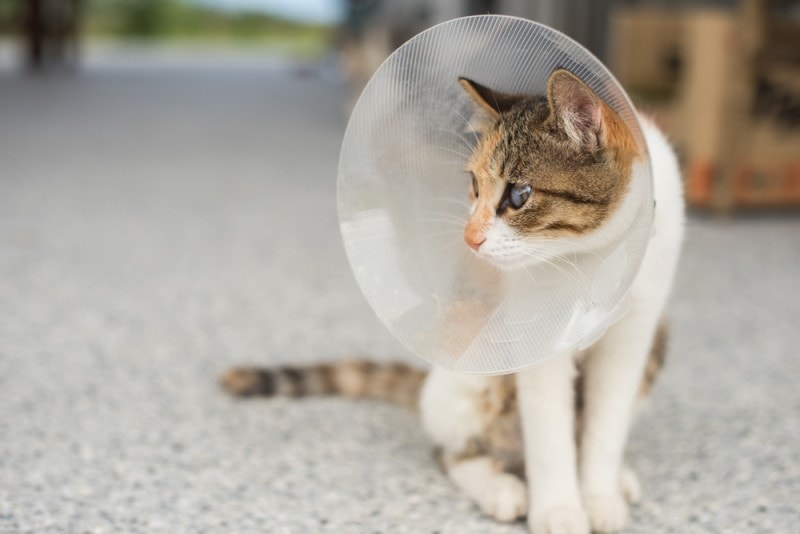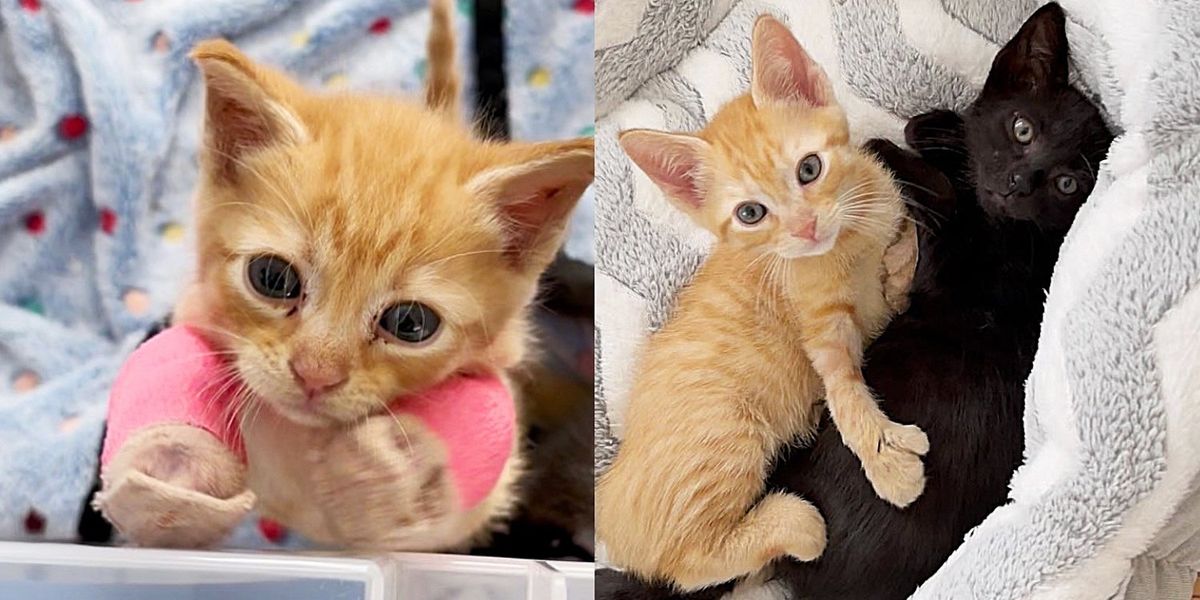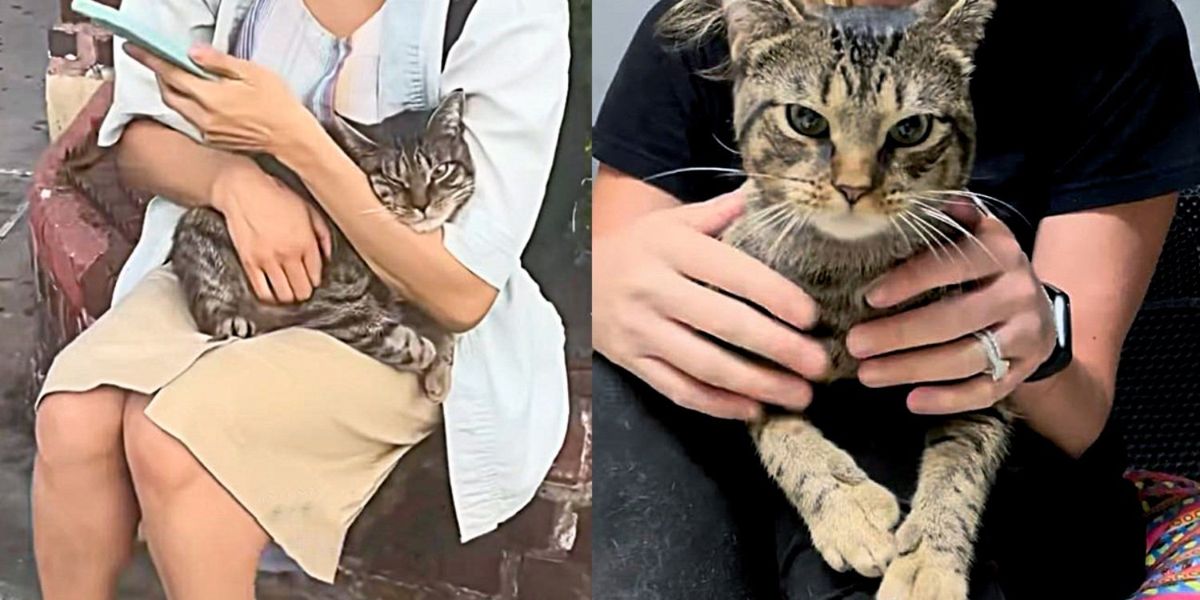Last Updated on: September 18, 2023 by Crystal Uys
Spaying or neutering your cat is one of the most important things you can do for your pet’s health and to support the well-being of the larger feline community. Not only do these surgeries have health benefits, such as lowering cats’ chances of developing certain types of cancer, but they also help reduce aggression and undesirable behavior, such as marking.
Spaying or neutering pets plays an essential role in keeping the feline population under control, as unexpected kittens sometimes become unwanted cats who end up living hard lives as feral animals. Keep reading to learn more about the benefits of spaying or neutering your cat!
Top 4 Benefits of Spaying or Neutering Your Cat:
1. It Helps Prevent Certain Types of Cancer
When a female cat is spayed before she goes into heat for the first time, it dramatically reduces her chance of developing certain types of breast cancer, which is invaluable since the cancer can sometimes be quite aggressive. The procedure also eliminates the risk of uterine and ovarian cancer.
It also means cats can’t develop conditions such as pyometra, which is a painful type of uterine infection. Neutering male cats can eliminate their risk of developing testicular cancer later in life.
2. It Helps Reduce Spraying, Roaming and Vocalization
Intact pets often exhibit behavior considered problematic by their humans. Male cats are prone to marking their indoor and outdoor territory with pungent urine streams— also known as spraying. And female cats in heat sometimes engage in escape attempts to find mating opportunities. However, spayed cats are happier to stay close to home and don’t have the same urge to wander.
Many intact felines vocalize excessively and become super affectionate. Spaying and neutering generally reduce mate-seeking vocalization in both male and female cats. They mark less, but males and females can still spray when feeling stressed or threatened.

3. It Helps Prevent the Transmission of Feline Diseases
Diseases like leukemia and feline immunodeficiency virus (FIV) can be transmitted through bites and scratches. Intact male cats get into fights more often than neutered pets. Hormones and competition for mates frequently drive the behavior. Neutering cats reduces the intensity of aggressive behavior, which can lower their risk of developing potentially life-threatening conditions after being bitten in a showdown with a neighborhood cat. Cats infected with feline leukemia suffer from frequent infections and often live relatively short lives.
4. It Helps Keep Shelter Populations Low
While it’s always difficult to come up with precise figures for the number of stray and feral cats, estimates suggest that the community cat population in the United States may exceed 70 million individuals. Unfortunately, several cats that end up in shelters are euthanized.

At What Age Can Cats Be Spayed or Neutered?
Cats can be spayed and neutered starting around 6 or 8 weeks old, but some pet parents wait until their cats are 5 to 6 months old. However, adult pets can have the surgery anytime as long as they’re healthy enough to be anesthetized. You can speak to your veterinarian for solid advice on the best time to get your cat fixed and how long the recovery period lasts.
How Long Does Recovery Take?
It depends! Younger cats tend to recover from the procedures faster than older pets. Most male cats return to normal about 5 to 7 days after being neutered. Cats that require more extensive operations sometimes need up to 2 weeks to start feeling better. Female cats often experience pain and inflammation for a week or so after being spayed, but most recover within 2 weeks.
Do These Surgeries Have Side Effects?
Most cats tolerate spay and neuter surgeries reasonably well. Some experience nausea and aren’t interested in eating much for about 12 hours after they come home. It’s also common for cats to have difficulty peeing in the first few hours after surgery, and some become constipated due to the anesthesia.
While most cats recover just fine from spay and neuter procedures, complications such as infections and inflammation can occasionally develop. They should be closely monitored for about 12 to 24 hours after surgery to ensure everything is headed in the right direction.

Are There Disadvantages to Spaying or Neutering Cats?
Neutered cats tend to put on weight easily. Not only is obesity one of the most common preventable feline diseases, but it’s also linked to the development of conditions such as arthritis and heart disease. Staying on top of how much you feed your cat and limiting treats to 10% of your buddy’s diet can help them maintain a healthy weight. Your veterinarian can give you an idea of whether your cat is an appropriate weight or not.
Are There Low-Cost Options Available?
Shelters often spay or neuter pets before sending them to their forever homes. Many include the cost of these operations as part of the overall pet adoption fees. If you’ve adopted an intact cat, you can search for rescue organizations and shelters that offer low and no-cost spay and neuter clinics.
Conclusion
Spaying or neutering cats has several health benefits. It dramatically reduces female cats’ risk of developing uterine and breast cancer and helps reduce aggression and marking in male pets. Female cats who’ve been spayed don’t go into heat, so you won’t have to deal with the vocalization, affectionate behavior, and escape attempts that often come with the feline estrus cycles.
Spaying and neutering can occur after kittens are 6 to 8 weeks old, but some veterinarians wait until the cats are a bit older to perform the procedure. The procedures are relatively simple, frequently performed, and usually only require short recovery periods.
Featured Image Credit: Elwynn, Shutterstock
About the author
Cat mom to Ivy – a feisty little rescue kitten that is her one and only child. For now! Throughout her life, she has been introduced to the special love that can be found in the bond with a cat. Having owned multiple felines, she is more than certain that their love is unmatched, unconditional and unlike any other. With a passion to educate the public about everything, there is to know about felines, their behavior, and their unique personalities, Crystal is devoted to making sure that all cats and their owners know the importance of conscious living – and loving!



